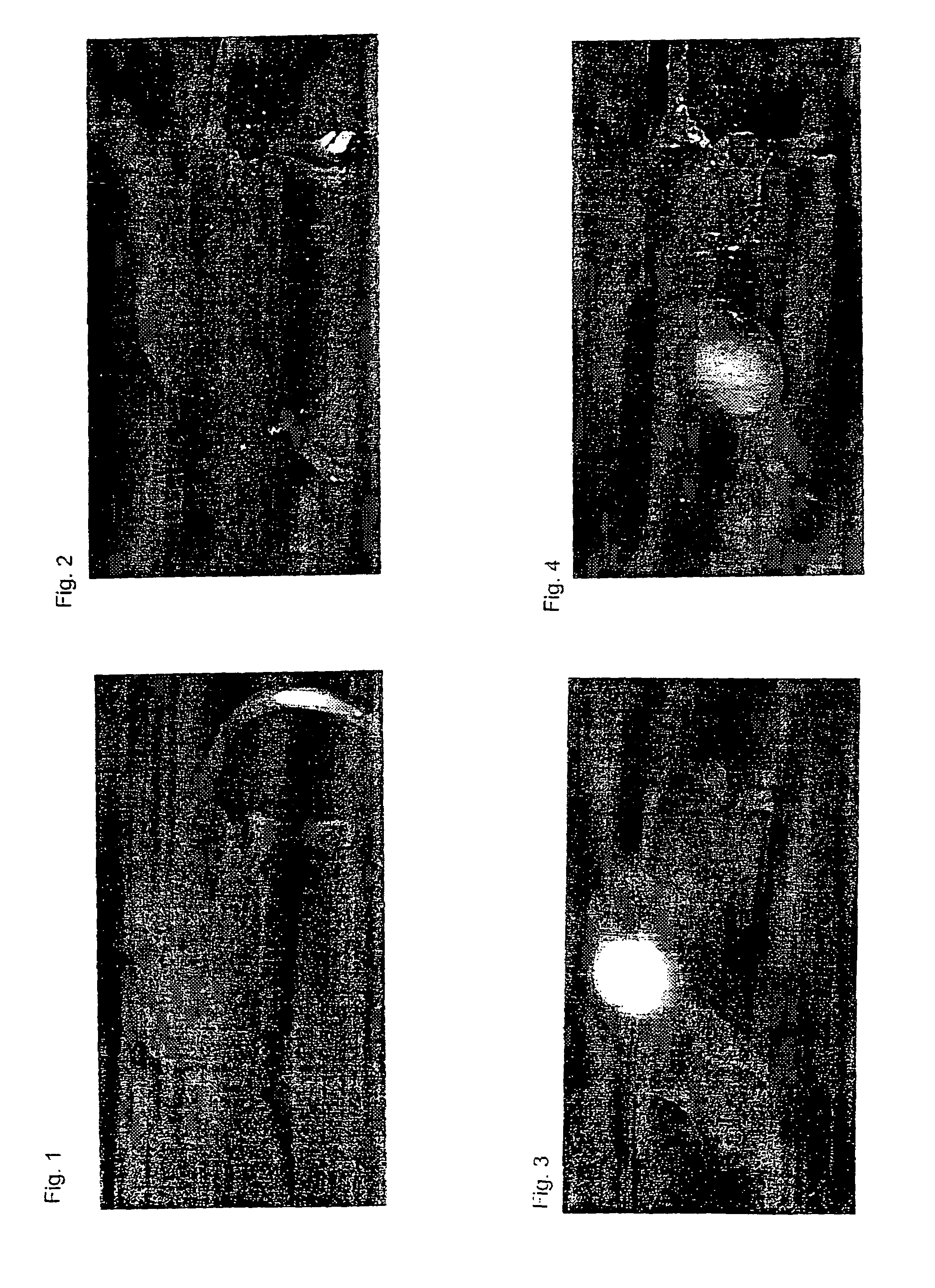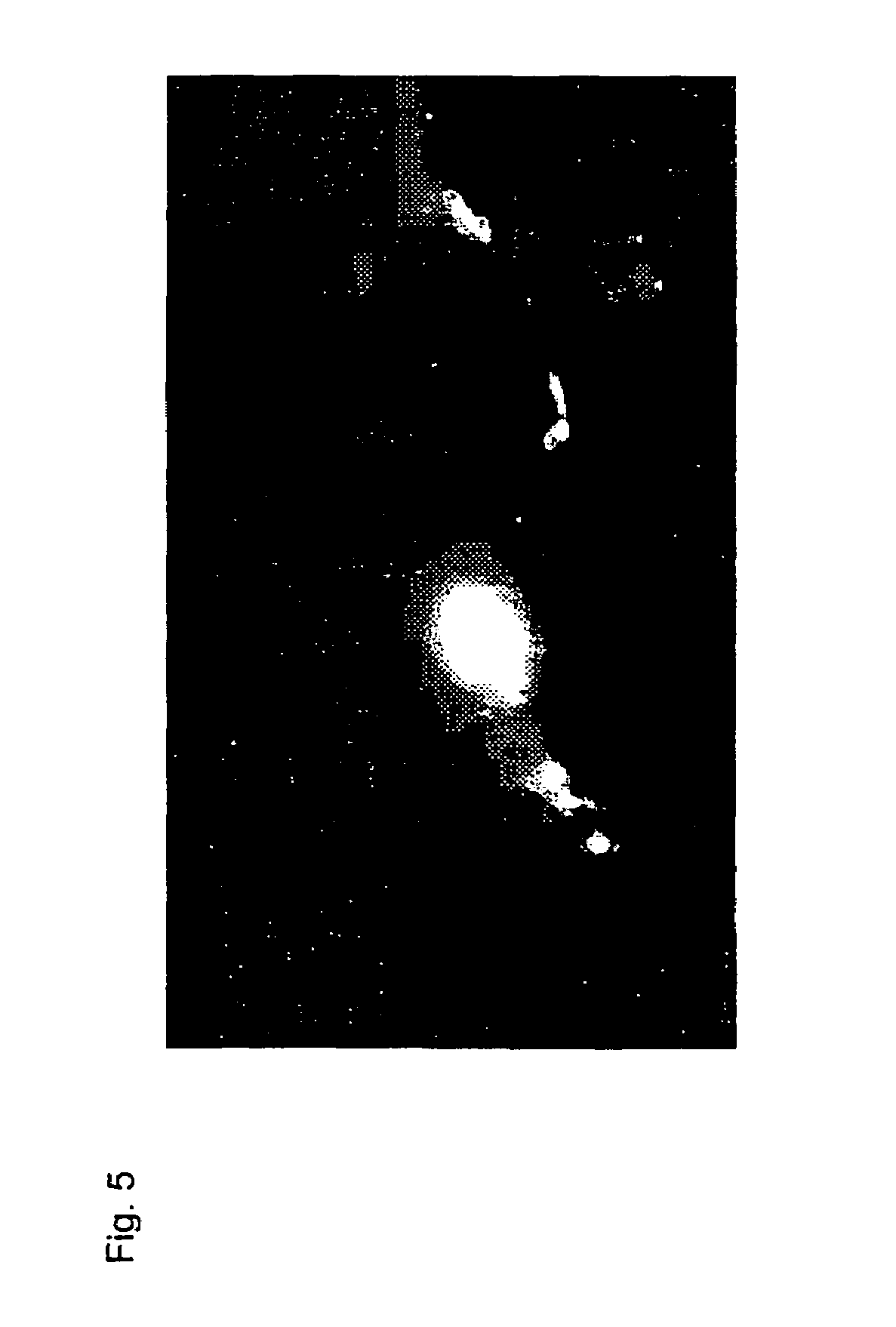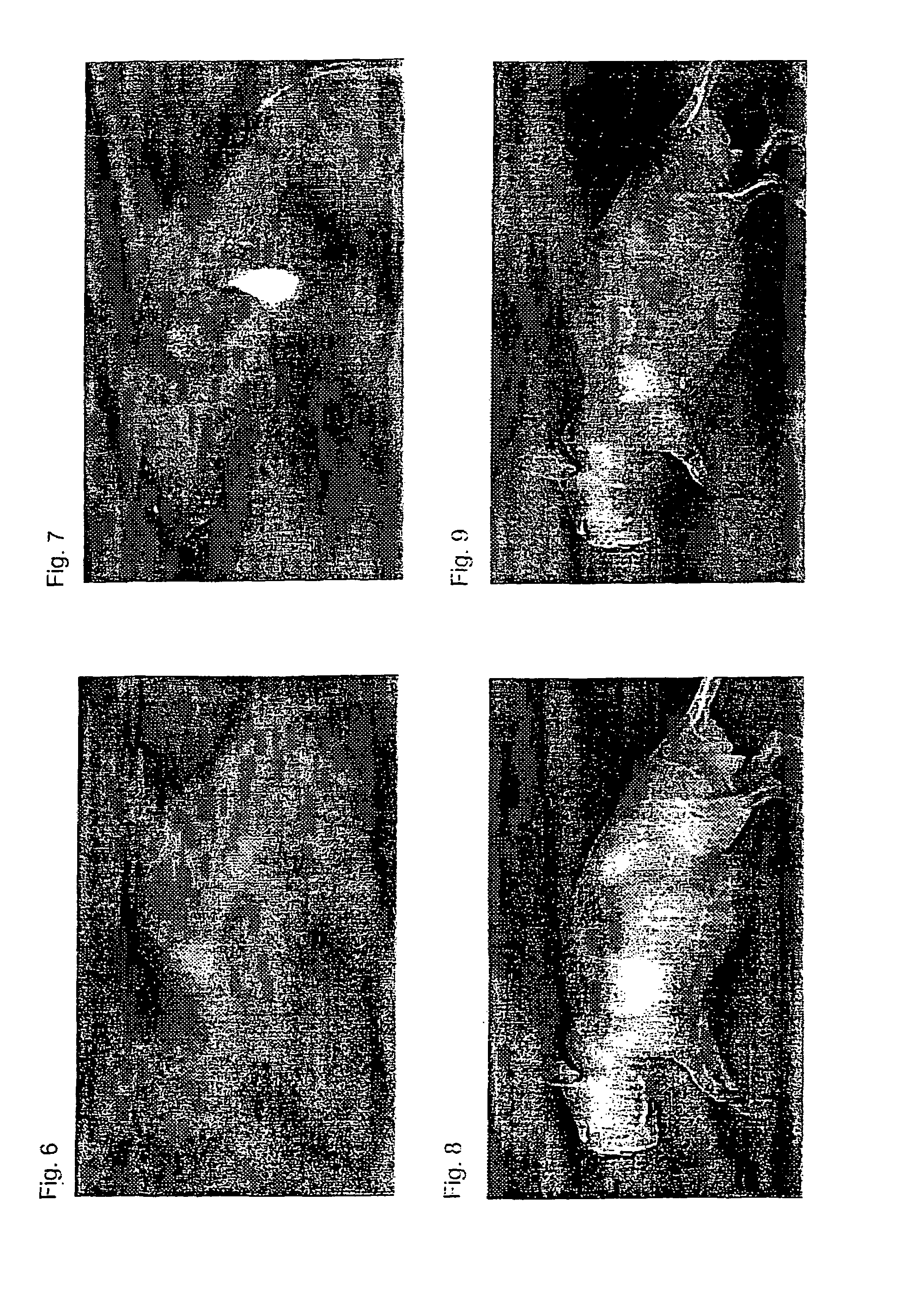Near infrared fluorescent contrast agent and fluorescence imaging
a fluorescent contrast agent and near infrared technology, applied in the direction of drug composition, biological material analysis, biological testing, etc., can solve the problems of affecting the safety of test subjects, and exposing test subjects to radiation and magnetic waves. , to achieve the effect of superior solubility in water and low toxicity
- Summary
- Abstract
- Description
- Claims
- Application Information
AI Technical Summary
Benefits of technology
Problems solved by technology
Method used
Image
Examples
example 1
Synthesis of Compound (29)
[0135]To heterocyclic quaternary salt compound Q1 (5 g) were added methanol (100 ml), N,N-dimethylformamide (25 ml), triethylamine (5.6 ml), dianyl compound A1 (1.83 g) and acetic anhydride (3 ml), and the mixture was stirred at room temperature for 4 hours. Triethyl amine (2.2 ml) and acetic anhydride (2 ml) were added, and the mixture was stirred at room temperature for 3 hours. The insoluble matter was filtered off, and a solution of sodium acetate (2 g) in methanol (15 ml) was added to the filtrate, which was followed by stirring at room temperature for 1 hour. The resulting crystals were collected by filtration and washed with a small amount of methanol. To the obtained crude crystals (3.5 g) was added water (20 ml) for dissolution. Sodium acetate (19) was added, and then methanol (30 ml) was added, which was followed by stirring for 1 hour. The resulting crystals were collected by filtration, washed with a small amount of methanol and dried to give 3 ...
example 2
Synthesis of Compound (34)
[0141]To heterocyclic quaternary salt compound Q2 (2.13 g) was added methanol (20 ml) and the mixture was cooled to 10. Thereto were added dianyl compound A2 (0.75 g), triethylamine (4 ml) and acetic anhydride (2 ml), and the mixture was stirred for 20 minutes. Acetic anhydride (2 ml) was added, and the mixture was stirred at 10 for 4 hours. The insoluble matter was filtered off, and a solution of sodium acetate (2 g) in a small amount of methanol was added to the filtrate. The resulting crystals were collected by filtration and washed with a small amount of methanol. To the obtained crude crystals was added water (7 ml) for dissolution. Methanol (7 ml) was added to precipitate crystals. The resulting crystals were collected by filtration, washed with a small amount of methanol and dried to give 1.2 g of compound (34). The obtained compound (34) showed yellow in a flame test.[0142]Maximum wavelength of absorbance (H2O): 794 nm[0143]Molar absorption coeffici...
example 3
Synthesis of Compound (6)
[0145]To heterocyclic quaternary salt compound Q3 (9.5 g) are added methanol (50 ml), triethylamine (7 ml), dianyl compound A3 (3.1 g) and acetic anhydride (3.9 ml), and the mixture is stirred at room temperature for 7 hours. The insoluble matter is filtered off, and a solution of sodium acetate (5 g) in a small amount of methanol is added to the filtrate. The mixture is stood overnight. The resulting crystals are collected by filtration and washed with a small amount of methanol. To the crystals is added water (30 ml) for dissolution. Sodium acetate (2 g) is added, and then methanol (30 ml) is added. The resulting crystals are collected by filtration, washed with a small amount of methanol and dried to give compound (6).
PUM
| Property | Measurement | Unit |
|---|---|---|
| size | aaaaa | aaaaa |
| partition coefficient log Po/w | aaaaa | aaaaa |
| lapse time | aaaaa | aaaaa |
Abstract
Description
Claims
Application Information
 Login to View More
Login to View More - R&D
- Intellectual Property
- Life Sciences
- Materials
- Tech Scout
- Unparalleled Data Quality
- Higher Quality Content
- 60% Fewer Hallucinations
Browse by: Latest US Patents, China's latest patents, Technical Efficacy Thesaurus, Application Domain, Technology Topic, Popular Technical Reports.
© 2025 PatSnap. All rights reserved.Legal|Privacy policy|Modern Slavery Act Transparency Statement|Sitemap|About US| Contact US: help@patsnap.com



